Koi ponds look gorgeous any time of year but are particularly beautiful in winter months when ice and snow rest smoothly over their surfaces. As a koi owner, though, you might wonder whether a frozen koi pond is safe for your fish?
Most of the time, the answer is that it is.
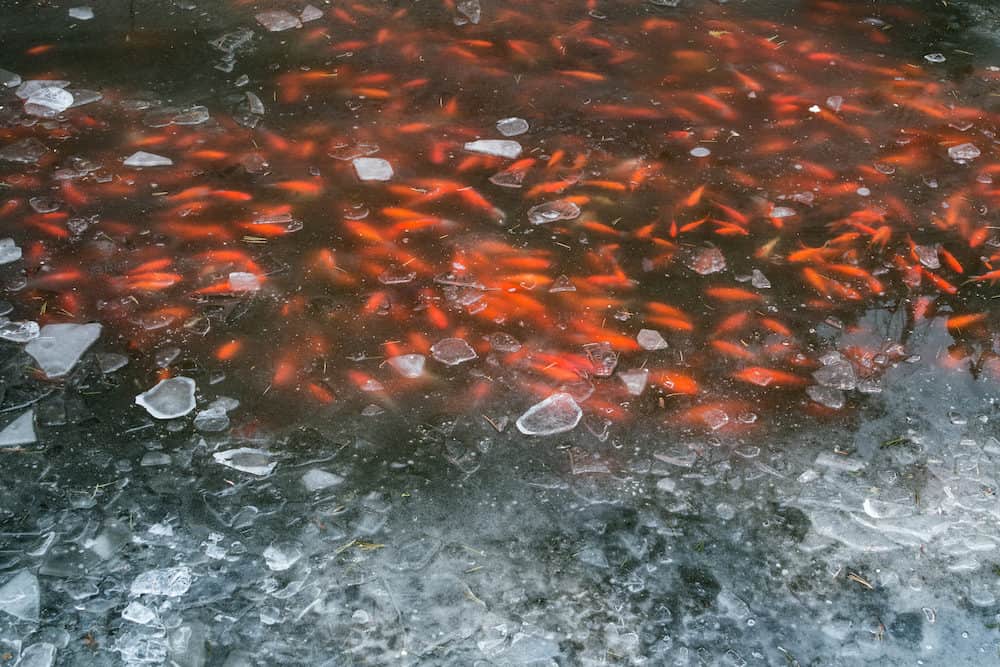
I'm not a koi fish expert, but I have years of experience as a pond owner and hobbyist, and the last several winters have taught me a few lessons I'm happy to pass along.
Below, I'll discuss when it's okay for a pond to freeze and when it isn't, what ice-covered water does to fish, and how to ensure your koi fish live through the winter season.
If ice begins to overtake your koi pond in the winter season, you probably don't need to worry. As long as there's at least a small opening in the ice, your pond fish will be okay. The opening will allow for gas exchange that your fish need to survive.
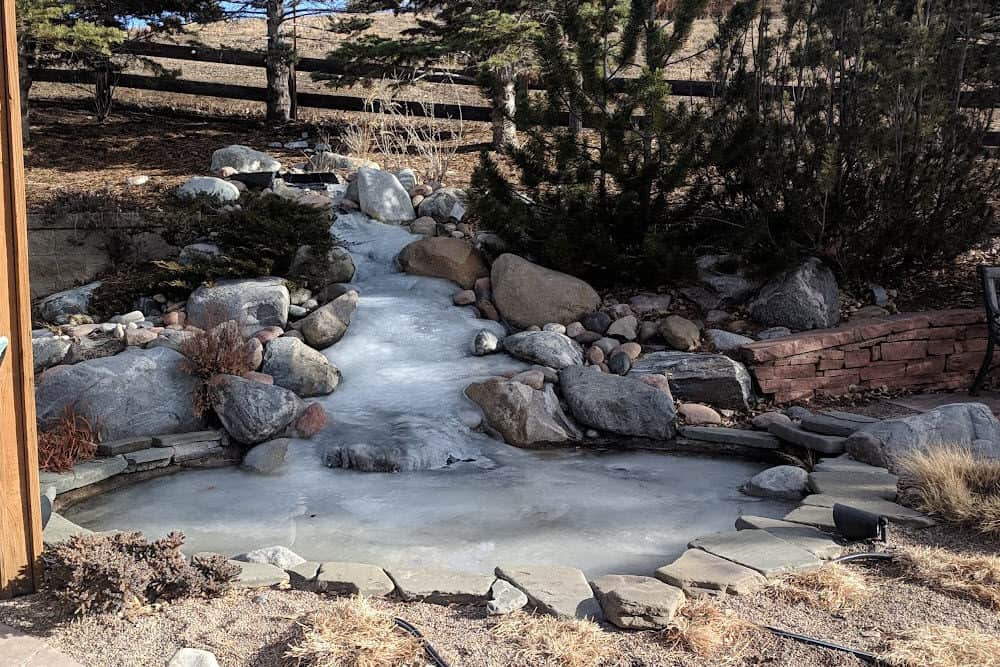
Healthy ponds absorb oxygen from the air at the water's surface. They also release carbon dioxide and other toxic gases. Essentially, your pond needs to breathe in order to be functional.
Your koi fish take the oxygen from the water and release carbon dioxide through their gills. So, if your pond doesn't have enough oxygen, fish begin to suffer and eventually die.

Ice over the surface of your backyard pond prevents gas exchange, but as long as there's a small opening, a few feet wide or more, there will be enough exchange to keep your fish alive through winter.
Keeping that opening in your pond is easy with a piece of equipment or two. There are also manual ways to keep an ice hole. We'll discuss equipment and manual techniques in-depth below.
However, if your pond freezes solid, your fish won't live. So, while a frozen surface isn't a problem, a total freeze is. Luckily, your pond probably won't freeze solid, at least not in most areas of the United States. That's because of the way ponds freeze.
When temperatures drop to freezing levels, you might notice your pond is still liquid. This is because bodies of water are excellent reservoirs of heat. As the temperature continues to drop to about twenty-eight degrees Fahrenheit or below, you'll notice the surface of your pond begins to solidify.
Once the surface ices over, it's less likely that the deeper levels of the pond will follow suit. The frozen surface acts as insulation, making the pond warmer as you travel deeper and allowing your koi fish, goldfish, and other aquatic creatures to survive the winter months.
That's not to say your koi fish are active during cold weather. Rather, they'll be in a state of torpor or dormancy. They won't move much and won't need to eat. Thankfully, once spring arrives, they'll "come back to life," and you'll be able to enjoy your pets again.
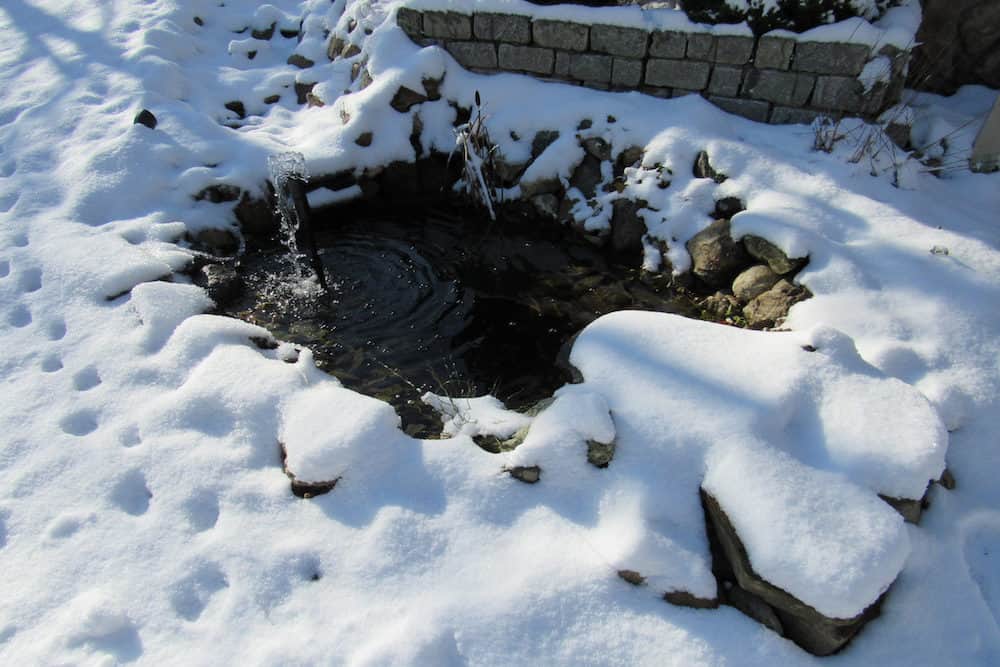
If you have a shallow pond, less than three feet deep, or live In the coldest areas of the United States, your pond could freeze solid in winter.
You may be able to prevent this with one of the methods we discuss below, but in the case of a pond that's extra shallow, it might be best to move your fish. A deeper pond, tank, or indoor pond space will ensure you koi thrive despite low ambient temps.
To keep an opening in pond ice and promote gas exchange, you can use a deicer, a pond heater, or a pond aerator. In more temperate climates, where freezes are rarer, you might consider a manual option instead.
An aerator is a device that pushes compressed air into pond water to create movement and encourage oxygenation. Most koi pond owners are already familiar with them because koi fish thrive in well-oxygenated water. So, if you have a koi pond, you probably already have an aerator.
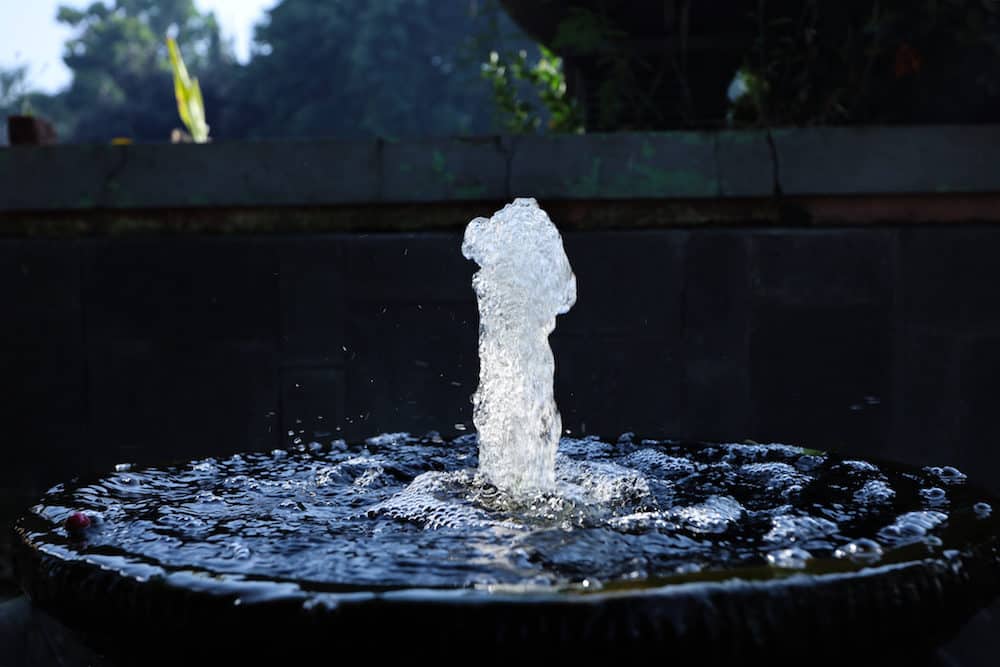
An air pond pump or aerator can prevent freezing by keeping the water moving. However, the steady movement may not be enough in harsh winters, and your pond can still freeze over. So most people who use aerators alone live in moderate climates. Otherwise, you may need both an aeration system and a deicer.
Aerators don't cost very much to run and don't require much power. That said, if you position one incorrectly, it can cause severe damage.
An aerator placed in the wrong part of your pond will push warm water off the pond's bottom and towards the surface. If that happens, your fish could die. So, ideally, you'll place the aerator off the bottom of the pond but still between 12" and 18" deep. This position promotes oxygenated water without killing your fish.
Pond de-icers are electrical devices that generate just enough heat to keep a hole in the ice. They come in floating and submerged styles, and are a must in colder climates.
De-icers come in wattages from 500w to 1500w. What you need will depend on the volume of your pond. At less than 70 gallons, a 500w de-icer will be sufficient. If your pond tops 100 gallons, though, you'll need the 1500w option.

Unfortunately, de-icers can significantly add to your power bill, especially in extra cold regions. You can help control this by looking for one with thermostatic controls. That way, the de-icer will only turn on when the water temperature gets too low.
De-icers will keep a pond opening to promote gas exchange, especially at the surface, but keep in mind that your koi fish will be hibernating in your pond's depths where it's warmest. So, to keep your fish happy throughout winter, it's usually best to use an aerator alongside your de-icer. The aerator will encourage water oxygenation throughout the pond, not just at the surface.
Most of the time, pond owners use the terms deicer and pond heater interchangeably. And many manufacturers label deicers as pond heaters and sell them as such.
There are pond heaters, though, that keep more than a hole in the ice. Instead, they keep your pond spring-like throughout the coldest months, much like a heater for a hotel swimming pool.
Pond heaters aren't necessary for koi ponds because koi fish can handle a dormant period every year. Given how inefficient and expensive it is to heat a pond to balmy temps despite ice and snow, most pond owners don't invest in true pond heaters.
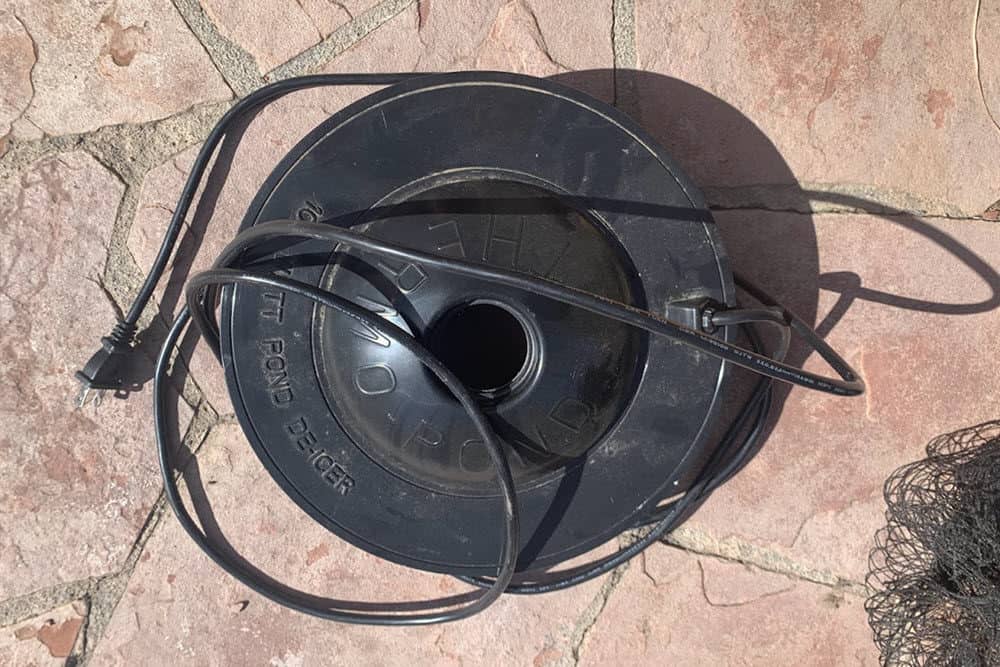
In areas where it doesn't freeze very often, or if consistent power outside is a problem, you might consider manual options for keeping a hole in your pond's ice.
The above methods are all safe for your koi fish, but there is one solution you shouldn't attempt. Never hammer a hole in the ice of your pond. The reverberations can cause potentially fatal concussions for koi.
In USDA zones ten and lower, you should winterize your pond each year. Winterizing will ensure your pond stays healthy and involves more than just carving a hole in the ice.
To winterize your pond, begin by removing any leaves or yard debris. As leaves decompose in your pond, they release toxins. Those toxins can escape more easily in warm weather through the surface gas exchange, but dying leaves can become a problem when that exchange is reduced due to ice.
Once your pond is clear of debris, you might consider installing a pond net to catch any more falling leaves. You should also trim back the plant life around your pond and consider vacuuming the pond's bottom.
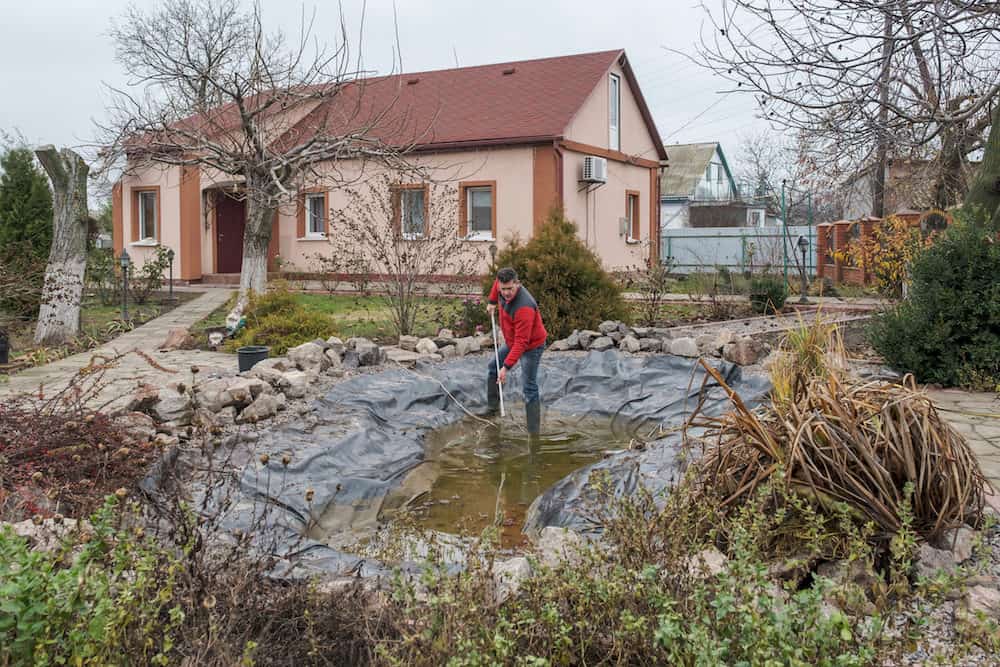
Then, when the temperatures reach a consistent 40 degrees Fahrenheit or lower, you should stop feeding your fish. At this point, they'll be dormant, and their food will go uneaten. Just like the leaves and yard waste, excess fish food will release toxins as it decomposes.
You'll also want to cover any external pumps and filters which can freeze in harsh winter temps. Use a heavy tarp over the pump and filter system. The heat from their motors trapped by the tarp will keep them from freezing solid.
Some pond owners also add cold water beneficial bacteria to their ponds. The bacteria encourage cleaner water conditions by reducing ammonia, nitrites, and waste. Many bacteria products also contain added vitamin B, which will promote brighter colors in your fish come spring.
If you have a waterfall, you'll probably want to turn it off. Frozen waterfalls are beautiful, but they can cause problems. A frozen waterfall stream can create an ice dam, forcing the water over the top of your pond liner and out of the pond.
Finally, you may want to consider a dark dye to prevent predation. In certain areas, you'll still get predators that are more than happy to dive deep for dormant fish, even in frigid temps. Blue herons, for example, often fish ponds all winter long. A monthly dose of dark dye will make it difficult for them to see the fish at your pond's bottom.



